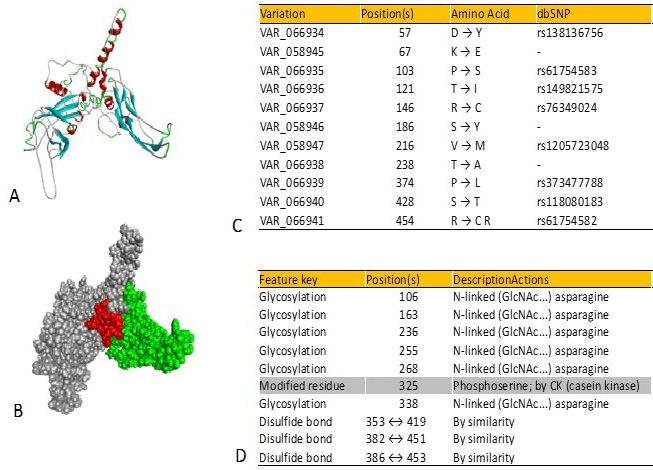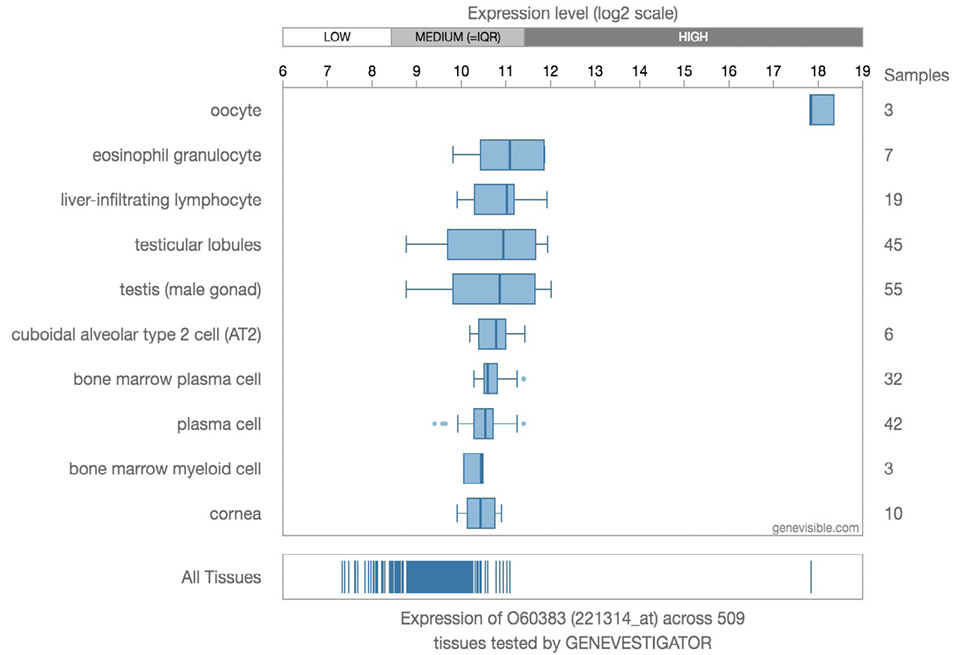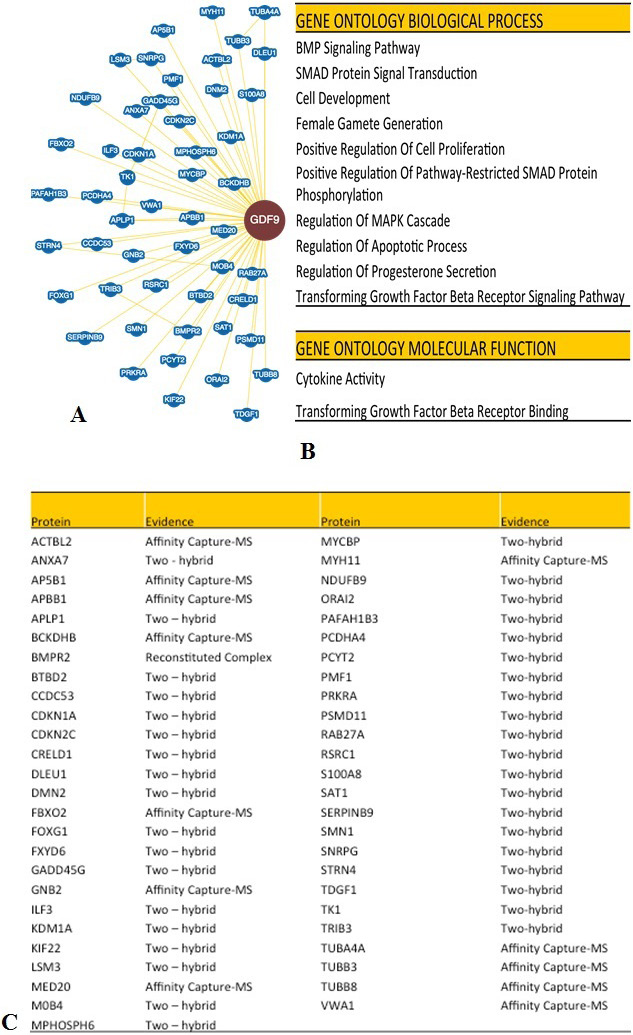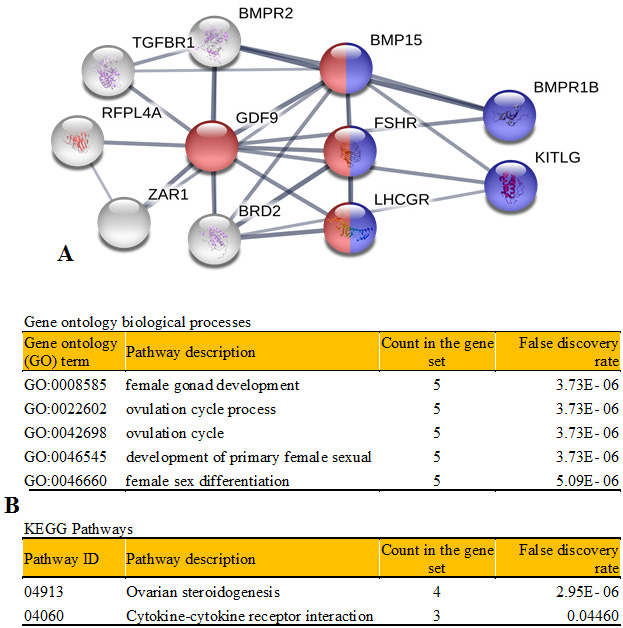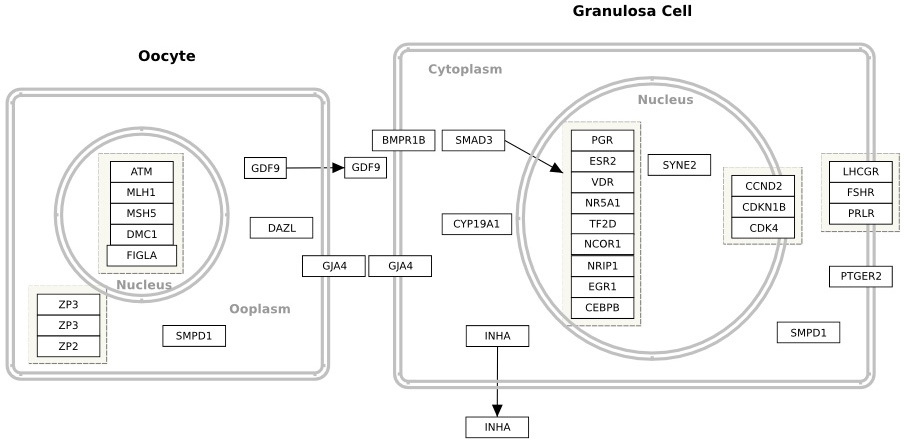The Fundamental Role of GDF9 In Mammalian Ovarian Function: A Computational Biology Analysis
The Fundamental Role of GDF9 In Mammalian Ovarian Function: A Computational Biology Analysis
Sri Rahayu*, Muhaimin Rifa’i and Widodo
The structure of GDF9 protein. GDF9 protein model (A) Red, helix; cyan, sheet; gray, coil. Components of the GDF9 protein (B) Red, signal peptide; gray, propeptide; green, mature GDF9. Natural variations of GDF9 (C). Protein processing by glycosylation, disulfide bonds, and post-translational modification by creatine kinase phosphorylation as shown in Golgi (D).
GDF9 expression levels in different cells and organs, extracted from the Genevestigator database (Hruz et al., 2008).
GDF9-binding proteins. (A) GDF9 protein interaction results from the BioGRID database. (B) The role of GDF9 protein in gene ontology biological processes. (C) List of proteins that interact with GDF9, based on results from the BioGRID database.
GDF9 protein interaction network. (A) The network of GDF9 interaction based on the STRING database (B) Pathway description of GDF9 based on gene ontology and KEGG pathways.
GDF9 is produced by oocytes. It is involved in communication with granulosa cells and activates various genes via SMAD3 signaling. (Adapted from Ovarian Infertility Genes (Homo sapiens) in Wiki Pathways).







